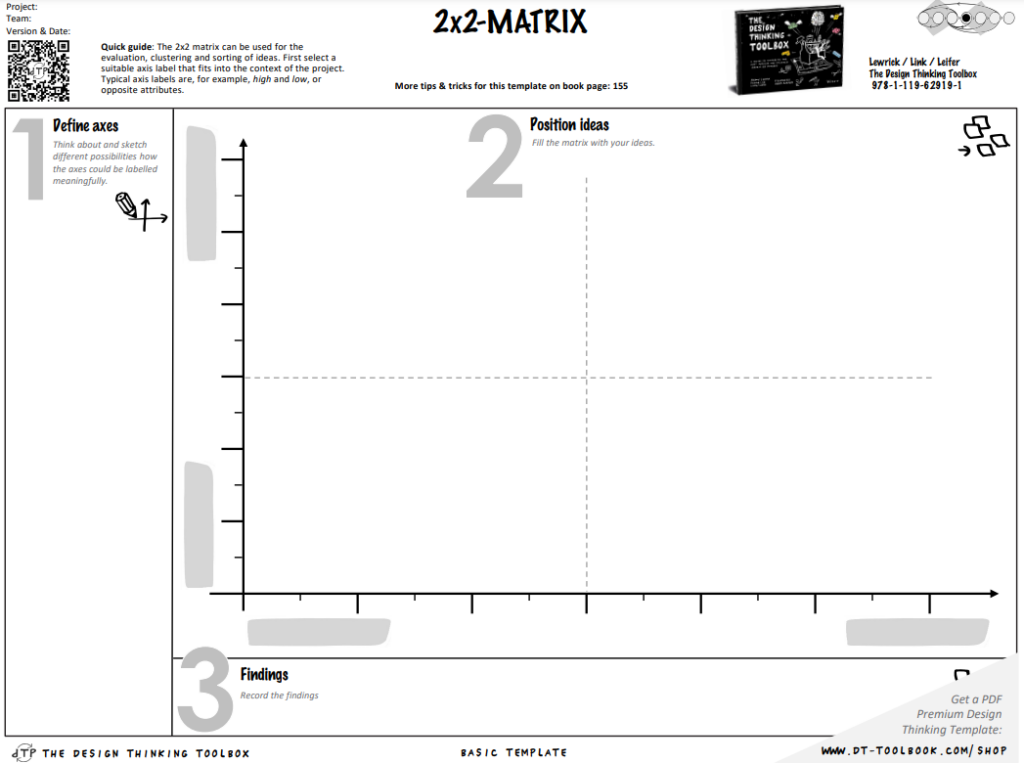2x2 Matrix
What is it
A four-quadrant grid that sorts ideas, projects, or components based on two different (usually opposing) measurements or metrics.
When to use it
This is a very generic tool, so it can be used for many different things depending on the metrics chosen. Some examples of when it could be used include sorting ideas or evaluating the effectiveness of certain areas of events.
How to use it
Before creating the grid, think through what you want to get out of this exercise. Go through the following question to pinpoint the “why” of why you’re doing this exercise: What do you want to get out of this exercise? How will this exercise help you? Where are you hoping this exercise will get you when you’re done? Now that you’ve thought through those questions go ahead and create a simple 2×2 matrix. This can be done with a variety of different mediums. If you’re doing this by yourself, use whatever feels more comfortable for you, whether that’s just a pen and paper, a whiteboard, or your iPad. If you’re doing this as a team, it’s recommended to use a whiteboard (if everyone is in person) or an online whiteboard platform, such as Miro, for real-time collaboration.
Before writing down things, determine what each quadrant means for you and your team. Which quadrant will produce the best ideas? Which quadrant will house the ideas you want to avoid? Which quadrants hold content that will need improvement or could be used later on in the process after additional consideration? This will help clarify where you need to put certain things and which things you should focus your time on after completing the exercise.
When you’ve drawn the grid, begin to think through the metrics you want to put on the axes. These metrics will usually be opposing each other in some fashion. Impact vs effort, importance vs time spent, and the Eisenhower Matrix are just some examples of metrics that contradict each other. Once you’ve decided on your metrics, write one on each axis.
Now that each quadrant is “defined,” you can start putting ideas and projects into each quadrant. If you’re doing this on a whiteboard, we encourage you to write all projects or ideas on sticky notes so you can move things around later. If you’re working as a team, walk through each idea as a group to decide where it will go. Don’t take too much time on this, maybe 2-3 minutes maximum for each tool, so you don’t get hung up on a singular idea. Once all the ideas are on the matrix, take a few minutes to reflect on your findings. What surprised you? What stands out? What are your next steps? Based on your findings, determine the next course of action.
More Resources
Template by Design Thinking Toolbook
This toolbox is a prototype, so we would love to get any feedback, questions, or concerns you have about the tools! Click the button above and tell us how your experience was.

